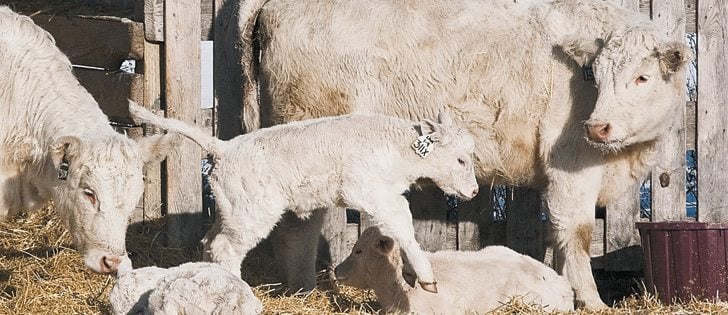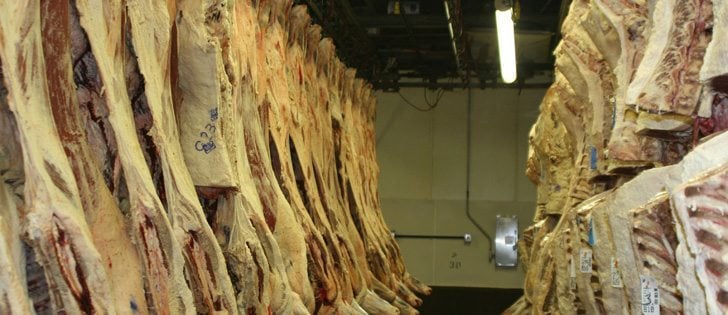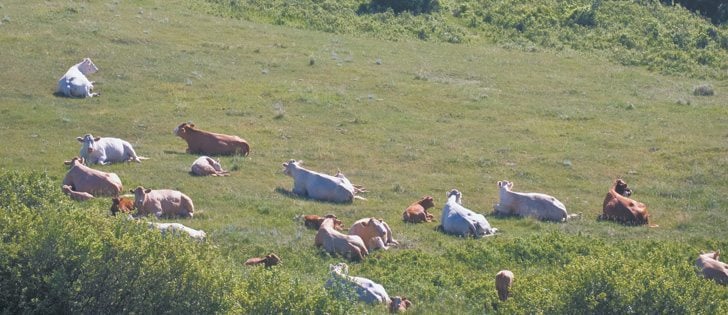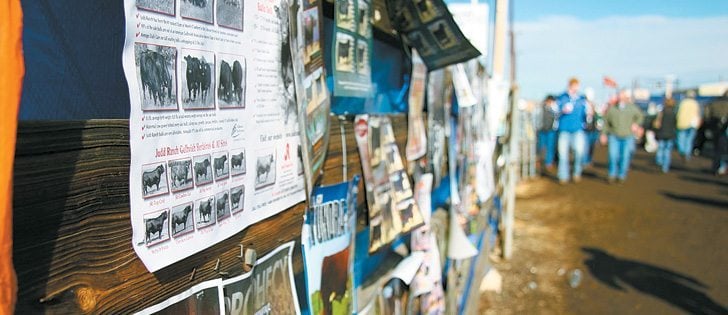The worst of winter is hopefully behind us, but a snowstorm or unseasonably cold weather is not uncommon in March or April in many parts of Western Canada.
If calving season is underway on your ranch, this can result in having to deal with chilled or hypothermic calves.
Newborn calves can encounter a dramatic temperature shift as they leave the warm, comfortable environment of the uterus and enter a cold winter-like environment.
Wet newborn calves can lose a tremendous amount of heat because of the large surface area exposed and the evaporation of birth fluids from the skin and respiratory tract.
Read Also
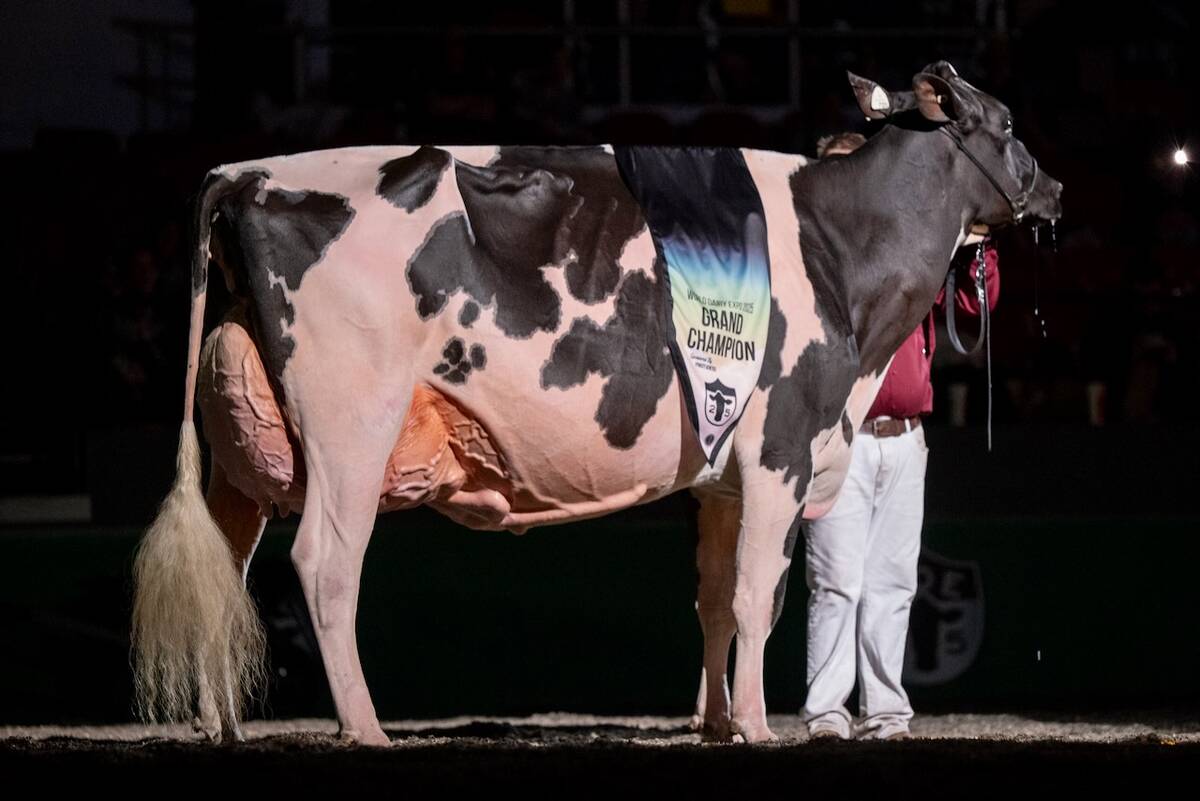
Canadian-bred cow wins World Dairy Expo Holstein show
A cow bred in Saskatchewan, Lovhill Sidekick Kandy Cane, is the Grand Champion Holstein at the 2025 World Dairy Expo.
Hypothermia in calves is associated with an increased time to standing, a delay in suckling that can lead to frostbite, increased calf mortality and poor absorption of colostrum. A study of 73 Colorado cow-calf operations suggested that hypothermia accounted for more than 12 percent of all neonatal mortality.
Calves have two ways to generate heat after they are born:
- shivering can produce small amounts of heat through the involuntary contraction of muscle tissue as well as muscle contractions that occur during normal movement
- brown fat, which many newborn mammals are born with, is located mainly in the area around the kidneys in newborn calves. It is the main energy source for heat production in the newborn prior to suckling colostrum
The importance of suckling colostrum within a few hours of birth is often emphasized for the important transfer of immunity that occurs from cow to calf. Of equal importance is the role that colostrum plays in supplying nutrients to meet the calf’s energy demands in the first few hours of life.
Calves are born with relatively few energy reserves and early and adequate colostrum intake is especially important for preventing hypothermia.
Controlling heat loss is another important way to regulate body temperature.
Calves are remarkably cold tolerant in a dry environment with no wind exposure, but newborn calves that are wet with birth fluids and precipitation can lose a great deal of heat through their skin and hair coat.
A dry calf is able to erect its hair coat and trap air within it, which allows a remarkable insulating effect. As well, calves can constrict their external blood vessels to limit blood flow to the skin, which also helps minimize heat loss.
Other risk factors beyond cold and inclement weather can also predispose calves to hypothermia.
Calves that experience dystocia (difficulty being born) or calves that are abandoned at birth are much more likely to become chilled. These calves are less likely to get up quickly and start moving and are also more likely to have an inadequate colostrum intake.
Calves with low birth weights or calves that are born to cows with inadequate nutrition during pregnancy are also more likely to become chilled because they have fewer energy reserves when they are born.
Calves that are experiencing diseases such as scours are more likely to become hypothermic when they are dehydrated.
The signs of hypothermia typically include physical weakness, depression, difficulty nursing and a reluctance to stand, along with an inability to move limbs. Chilled calves typically have a weak suckle reflex, a cold mouth and cool extremities.
A digital rectal thermometer is the best way to sort out which calves are truly hypothermic. The newer thermometers are relatively cheap and can provide a reading quickly.
Calves with a temperature of 38 C or higher are considered normal, while those with a temperature of 35 to 38 C are mildly hypothermic and will usually respond to tubing with warm colostrum and being placed in a sheltered or warm room.
Calves with a temperature lower than 35 C are experiencing significant hypothermia and may require other methods of treatment.
Once a calf is hypothermic, the same dry hair coat that usually keeps it warm can actually insulate it from warming in the same way that a Thermos or cooler can keep things cold. As a result, severely hypothermic calves that have been dried off often do not respond quickly to being placed in a warm room.
A hot box that blows warm air may help to some degree because it allows the calf to breathe warm air, which helps warm the large surface area of the respiratory tract. However, a warm water bath is the best treatment for extremely chilled calves.
Being placed in a tub of water that is typically at a normal body temperature of 38 C can make a tremendous difference to calves that are severely hypothermic. As well, the calves should be tubed with warm colostrum and in some cases given warm fluids intravenously.
However, severely hypothermic calves are often almost comatose, which means their heads will have to be held up while in the tub. As well, the water will cool quickly and may have to be changed several times while the calf is recovering.
Preventing chilled calves is accomplished by providing adequate bedding and shelter and by being vigilant during calving season and checking calving cows more frequently.




